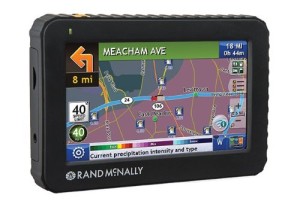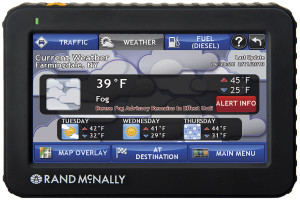Truck Stop Electrification is the new buzz word(s) in saving the environment. But there is more to buzz then just words. Today’s over the road trucks are mini-homes on wheels. While some are just the bunk, a little storage and maybe a 12 volt TV/Radio, many now contain small refrigerators, microwave ovens and other entertainment features. Some have sinks with hot/cold water. And of course, staying connected is now more important then ever, with email, video chat, TV show and movie streaming and video games. Add the growing office on the road requirements where paperwork, dispatch information and other reports are now handled instantly, and the growing electrical demands are out pacing the truck’s original battery power system physiology. When you factor in that many drivers are spending longer, multi-day trips on the road and are seeking more in creature comforts, the classic sleeper bunk will no longer cut it.
Be in the cold of winter or the heat of the summer, drivers now expect to be able to sleep in relative comfort. With the Hours of Service (HOS) changes now requiring longer more uninterrupted rest breaks, creature comfort is a more important factor. In the olden days, a driver could pull into a rest area, shut the truck down and craw into the bunk. About 4 to 5 hours later as the temperature in the sleeper became either too hot or too cold, the driver would wake up – and hit the road again. Now, being expected to be out of the seat for 8 to 10 hours at a time, the driver may need to maintain a more temperate environment to sleep thru the break and get the needed rest.
Modern commercial trucks are built with robust and hardy electrical systems, capable of producing more then enough electric juice for the needs of the modern, over the road truck. However, between the increased electrical loads from the toys and “household” appliances and heating/cooling needs, most drivers are forced to idle their trucks during their breaks. A 10 hour break, during which the driver will complete the mosaic of paperwork requirements, grab a meal, maybe a quick shower and of course 8 hours of sleep, a truck engine’s can nominally consume one gallon of fuel per hour. At $4.00 a gallon, that could be an easy $40 in mostly wasted money.
In addition to the wasted fuel, the idling truck creates added pollution. Both air quality pollution and noise pollution. Taken individually, the effects are minimum, however, when 100 trucks are all sitting in the same restrictively small area and each are idling away – the combined pollution and noise is measurable even without sensitive equipment. And at $40 per truck per 10 hour break – 100 trucks could exceed $4,000 in wasted potential profits.
There are two ways that truckers are cutting the idling – one is Truck Stop Electrification and the other is via APU, auxiliary Power Units or generators built into the truck’s systems.
Truck Stop Electrification
The growth of Truck Stop Electrification has taken several different paths. IdleAire, while maybe not the first, because the benchmark. Following their financial collapse, the pieces have been picked up by assorted entities. These services provide for stalls or parking spaces which have either overhead or ground level pylons with heated/cooled air, electrical connections, entertainment connections and other amenities.
The system is utilized by the driver parking in an assigned spot and connecting their truck, normally with unit installed into a cab’s window, to the system’s network. This then gives the driver access to heated or chilled air to maintain a comfortable sleeping and resting area. With access to cable TV, internet and other entertainment options, the driver can be at home even while not at home.
With some systems, the driver will purchase the the window interface and with others, the units can be rented short term during the stay. Pricing for different systems vary greatly, with some receiving support from taxpayer resources and others stand alone commercial operations.
For truck stop operators, Truck Stop Electrification, is a substantial financial investment. An investment that many truck stop owners are unwilling to partake because of the long term pay back requirements. The fastest growth in this area may require more private/public cooperation with cities or states offering grants, low cost loans or other incentitives for truck stops to upgrade these amenities. The cities, ever concerned about pollution and quality of life for near by residents, realize that Truck Stop Electrification could have a direct payback to their citizens. Several state Department of Transportation officials are also jumping on board realizing that Truck Stop Electrification offers many long term benefits to their state.
As increasing fuel prices continue to stress the profit margins of truck operators and pressure grows to curb pollution from idling trucks, Truck Stop Electrification projects will continue to grow.
Happy Trucking – John

